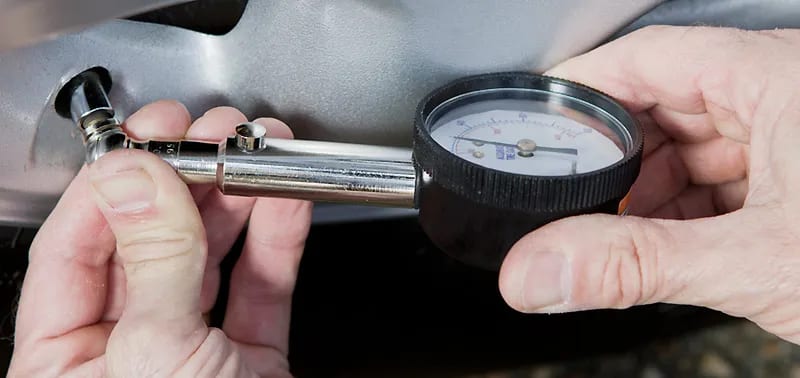What Causes Metal Shavings in Oil?
Metal shavings can build up in your car’s oil and cause issues. Learn what causes this problem and how to prevent it here!
There are many tests that vehicles undergo during the manufacturing process, including pressure measurements and tests on a range of parts and systems.
Having a knowledge and understanding of different pressure measurements and how they are used can be helpful when pursuing a career in the automotive industry. Attending a trade school like Universal Technical Institute (UTI) can help give you experience working with different pressure measurements and equipment.1
Keep reading to learn the distinctions between pressure measurement units and the applications they’re used for.
There are a few different ways to measure pressure, which is the amount of force exerted in an area.
The most common unit used for measuring air pressure in the United States is pounds per square inch (PSI). Knowing what PSI means and how it is used is important for various applications in the transportation industry.
For household, industrial and commercial equipment, PSI is used most of the time. Some of the applications it’s used to measure include tire pressure, test and measurement activities, and fuel storage and distribution.
While PSI is probably the unit you’re most familiar with, different factors may affect pressure and call for different kinds of measurements:

It’s also possible to convert a unit of measure in PSIG to PSIA. Considering PSIG is relative to atmospheric pressure, you can go between the two by adding or subtracting this measurement. The average pressure of the atmosphere at sea level is 14.7 PSI. To get a PSIG reading from PSIA, you simply subtract the 14.7 from PSIA. If you’re switching from PSIG to PSIA, you do the opposite and add 14.7 to your PSIG reading.
There are a few things that can affect the PSI and PSIG readings, regardless of how many molecules are inside a space.
Regardless of the number of air molecules there are, different weather and temperatures can affect how those molecules move and how much force they create. Colder molecules move more slowly, which decreases the amount of force they exert and results in a decreased PSIG reading.
Molecules move around more if the temperature rises, which will result in a higher reading. However, these fluctuations will typically only cause a 1 to 5 change in PSIG. It is important, however, to check and adjust tire pressure when it’s cold.
When altitude increases, atmospheric pressure goes down. The average decrease in PSIG is only about 0.5 per 1,000 feet, but this can be a lot depending on where you’re traveling. Altitude change is also related to temperature change, as going from a higher altitude to a lower one will result in a temperature increase.
PSIG measurements are most commonly used in the transportation industry, since they can measure air pressure in tires accurately, as well as other pressure systems in or near a vehicle’s engine.
During engine manufacturing, engine test stands are used to examine different engine variables to ensure things are working properly. PSIG or gauge pressure sensors are used to complete these tests, which include:
These pressure tests are the most common, though there are more in-depth tests that might check for things such as pressure decay or restrictions of airflow to the engine. These can help ensure there are no system leaks or unused power capacity in the engine.
Does the idea of working in a hands-on field sound interesting to you? It’s a great time to explore the potential the automotive field has to offer — total auto technician employment is expected to be 815,000 by 2033.47
At UTI, you can enroll in the Automotive Technology program and get the education and experience you need for an entry-level career in the industry.1Courses can teach you the skills you need to know, including how to perform different pressure tests on various systems.
Request more information today to take the first step toward an exciting future.
Universal Technical Institute of Illinois, Inc. is approved by the Division of Private Business and Vocational Schools of the Illinois Board of Higher Education.